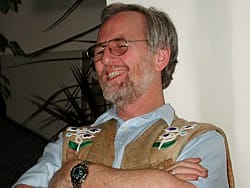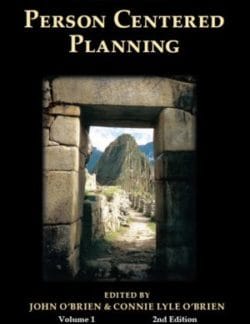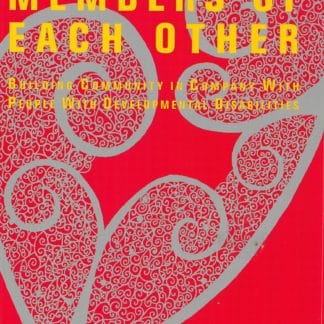ABSTRACT:
In the early 90’s, Marsha Forest, Te Ripowai Higgins (a Maori elder) and I were invited to join a meeting about ‘immersion schools on Six Nations Reserve. It was a battle zone. Indian Affairs had a powerful delegation armed with arguments and money – to have the community reject immersion language schooling. late in the evening, after the delegation departed, we made a counter proposal – to create and sustain their language and culture with an immersion school. Against all odds, they did
Jack Pearpoint – Books, Articles and Videos
A Diamond in the Rough:
Kanienkeha:ka/Gayokohno Immersion Schools
on the Six Nations Reserve
Jack Pearpoint
They are everywhere – in the most unlikely places – pockets of excellence, quality and learning.We were hesitant to write about the First Language Association on the Six Nations Reserve – because sometimes, notoriety can spoil the beautiful simplicity and clarity of a program we were recently privileged to see.We spent a day with several parents – visiting the community and classrooms. There are 156 students participating in full time immersion in the Mohawk and Cayuga languages. The classes began five years ago when several families on the Six Nations reserve grew frustrated with the high incidence of failure for Aboriginal students – on their reserve and across Canada. They wanted to do something.
They met and talked, and cried and talked and talked. They wanted a future for their children. In their conversations, they realized that only 250 of the elders of the community of 16,000 were still speaking their own languages – Mohawk or Cayuga. They realized that their children’s future depended on giving them an understanding of who they were and where they came from. They decided to create a school that would be rooted in the history and tradition of the culture of the Six Nations Confederacy. The key was to preserve the soul of their culture – their languages. They started.
Five years later, we visited one of two locations on the reserve where a collection of “portables” (trailer classrooms) corners a rural junction.
Then we walked in. It was small, cramped – a grade four class with a marvelous teacher who was squeezed on a tiny chair in one of five foursomes. Each grouping was totally immersed in stripping small piles of local roots (a traditional wild horse radish) which they had just picked. They would be canning them the following day. There were no discipline problems. The teacher, a venerable Mother Earth, led a choral practice of a traditional lullaby in Mohawk as they stripped the roots. A woman from the reserve had moved to British Columbia. They were making a tape to send to her new baby – a new member of the Six Nations.
We had a one word synopsis of what we saw and loved. The children exuded PRIDE! They were Mohawk Indians from the Six Nations Reserve. They were all getting jackets with their names, and the name of the school – IN MOHAWK. That is a red badge of courage these children will wear lifelong because of the remarkable educational foundation being built in this little school.
There were several teaching aides – some of whom where also learning Mohawk. They never had the opportunity before. Many of them will spend their lives learning to overcome the cultural genocide that was imposed in the Residential Schools for over a century. They were beaten when they spoke “Indian”, and gradually came to believe they were inferior. It takes hard work to unlearn lies that have been beaten into little children. That is why this school is so different – so important. These children have a new foundation. They are proud of their heritage and secure in their culture.
One of the symptoms of health was that elders are regular visitors. We were told they glowed when the children could understand the language of their forefathers & mothers. Now the stories can be told they way they were meant to be told – not translated and watered down. The children chatter in English and Mohawk. They are quite delighted that we can’t understand and they can teach us.. Their teacher tells us that the children she has nurtured for five years are beginning to have the confidence to speak outside the school. She hears them on the playground. Next, she wants to build their confidence so they will speak Mohawk in the Mall. That will be the real test… We are sure they will pass.
Later, we visited the Grade One group. Pride beamed from tiny faces. An equally radiant elder teacher drilled the class through a Mohawk lesson that Paulo Friere would have been proud of. The teacher later explained hesitatingly that she didn’t have much formal education. We affirmed her wonderfully common sense approach. She simply listened to the children talking and taught them Mohawk for their issues of the day. Naturally, the children learned.
That night the parents met in the fire hall. We were invited. They have been meeting Monday nights for five years. They care about their children. They are committed to building a future for them. We didn’t know the agenda – or how long the meeting would last. The meeting just began. Fifteen parents – all ages. The first issue was a presentation on a proposed structure for a new school board. It was complex and full of legal frameworks.
We weren’t sure what we were to do – if anything. Then we were on the agenda. Mike Doxtater asked us to talk about what we had seen.
It was a magical moment – sitting in the Ohswekan fire hall around a rickety table on blue plastic chairs. There were no videos, no overheads – just parents who were fighting to create a future for their children. Marsha spoke from her heart. She told parents she had seen a little school that was a gem – that filled students, teachers and parents with pride about being Mohawk Indians. She told them they were right to fight for their culture – and they should not stop because the children in those classes would not be filled with despair. They would not commit suicide. The little fire hall was awash in tears. This tiny group of parents, struggling in isolation to create a future for their children, desperately needed to hear that they were on the right track. They understood fighting. They could stand up to government bureaucracies. But for a moment, they let their pain bleed through. They were so terrified they might not be right. They feared for the survival of their children. And they were bruised by the internal attacks. Their little school experiment was so threatening to “the system” that many neighbours and friends challenged their choice. They were not accepted within their own community. It was painful – when the essence of their little school was to build a stronger community for the future. But, it is terrifying for individuals to admit how much of their culture they have forgotten after centuries of colonial domination. The little school that is building a future based on their own heritage dredges up that recognition – that pain. It is very threatening.
These parents needed to be told that they were doing the right thing. When Marsha finished, I told them what they already knew – that North American school systems were failing all minority groups miserably. I told them that their language was the key – and that they were building a future for their children. They should let nothing and no one stand in their path.
There were more tears and a long silence.
Parents began to speak. They talked of the pain of being challenged by their own people. They shed tears as they talked of their own insecurity. A mother told a story. The whole school had a rally in the arena. There were teams. The parents from the Immersion school were recruited to help out. The question was what would the children from the Immersion school shout – Go Reds Go – or “Haoni Onikentara”. The real issue was that the parents who were asked to lead were being asked to stand up in front of others – their families and friends and speak Mohawk and Cayuga. They were ashamed and frightened. It took enormous courage to cheerlead for six year olds in Mohawk. The children didn’t have any trouble. They just liked shouting – Mohawk or English – it didn’t matter. But the parents and teachers had to overcome their inhibitions to speak out – to speak up – in Mohawk in their own community. The insecurity runs very deep.
And from a classroom, a parent teacher’s aid grasped for the tools to help her children. She said she was taking a “unqualified teachers aide” program, but it wasn’t giving answers to the real problems of her children. Through tears, she told us she was trying out the lessons in behaviour management, but that was when the kids began to act up. In despair, she would fall back to being mother, and everything seemed to work better. She told us that one of her students was acting out. As a mother, she asked the other students to help her. Together, as they talked, the child wept, “No more hydro…” Like children all over the world, she acted up when her family was in crisis. She didn’t know how to tell her friends and teacher that their power had been cut off. She was too embarrassed and too proud to announce that, so she messed up her school work. She wanted to stay at school. It was safe and there was hydro.
We told a weeping mother/teacher’s aide that she should never lose her maternal instinct – regardless of what teacher education classes might direct.
That little girl still doesn’t have hydro, but at least she knows she is loved, and won’t be rejected because of poverty. And the hydro will come back in time – but self confidence, once destroyed is very hard to rebuild. In the First Language Association schools on the Six Nations Reserve, self confidence and pride is still secure. And thus, we believe, the future has a solid foundation. No illiteracy here!
It was a privilege to be invited to a small community and find an educational diamond in the rough. It would be a privilege to assist that community to polish their diamond – but not too much. The children in the Immersion School can already see the star within the diamond. It doesn’t need to go on public display to convince them of its value. Better to be closer to the rock, and the earth and the water – where Aboriginal values are rooted. That is their future.
Inclusion, Integration and Education took on new and deeper meanings in Ohsweken.
No products found




